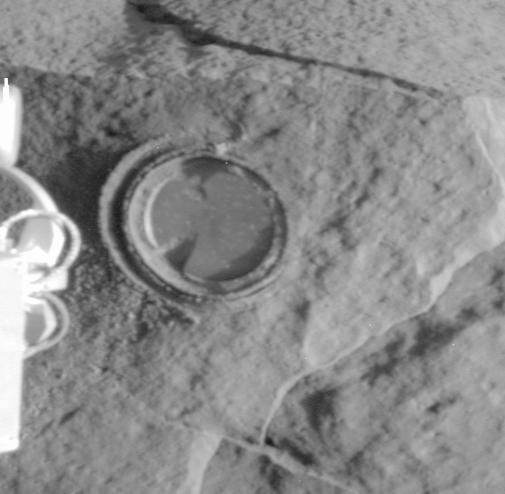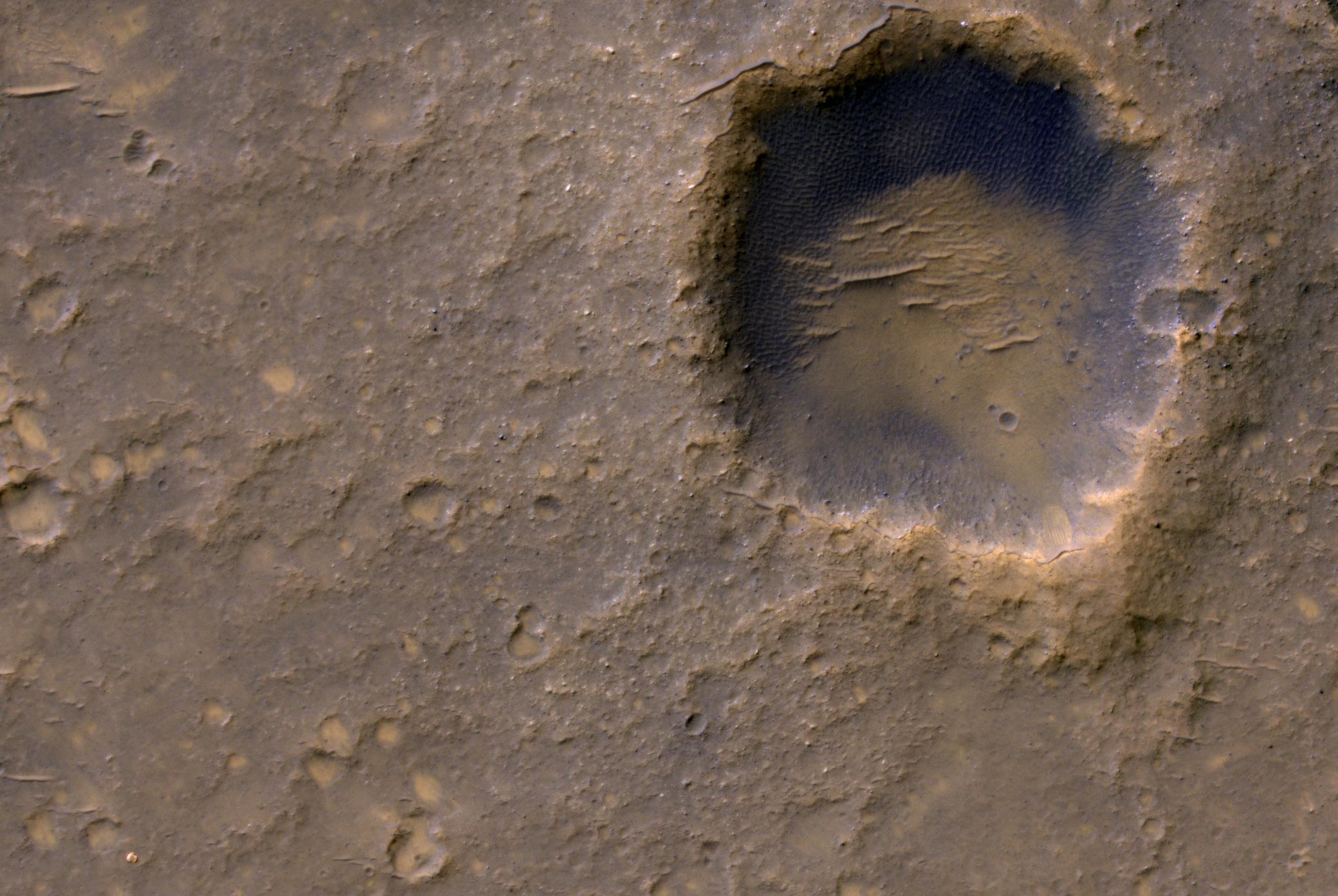|
Timeline Of Spirit
''Spirit (rover), Spirit'' is a robotic rover (space exploration), rover that was active on the planet Mars from 2004 to 2010. Launched on June 10, 2003, ''Spirit'' landed on Mars' Meridiani Planum on January 4, 2004, three weeks before its twin ''Opportunity (rover), Opportunity'' (MER-B), also part of NASA's Mars Exploration Rover Mission, touched down on the other side of the planet. ''Spirit'' became immobile in 2009 and ceased communications in 2010. NASA ended efforts to free the rover and eventually ended the mission on May 25, 2011. 2004 The ''Spirit'' Mars rover landed successfully on the surface of Mars on 04:35 Spacecraft Event Time (SCET) on January 4, 2004. This was the start of its 90-sol mission, but solar cell cleaning events would mean it was the start of a much longer mission, lasting until 2010. Landing site: ''Columbia'' Memorial Station ''Spirit'' was targeted to a site that appears to have been affected by liquid water in the past, the crater Gusev (Mart ... [...More Info...] [...Related Items...] OR: [Wikipedia] [Google] [Baidu] |
Spirit (rover)
''Spirit'', also known as MER-A (Mars Exploration Rover – A) or MER-2, is a Mars rover, Mars robotic rover, active from 2004 to 2010. ''Spirit'' was operational on Mars for Timekeeping on Mars#Sols, sols or 3.3 Martian years ( days; '). It was one of two rover (space exploration), rovers of NASA's Mars Exploration Rover Mission managed by the Jet Propulsion Laboratory (JPL). Spirit landed successfully within the impact crater Gusev (Martian crater), Gusev on Mars at 04:35 Ground UTC on January 4, 2004, three weeks before its twin, ''Opportunity (rover), Opportunity'' (MER-B), which landed on the other side of the planet. Its name was chosen through a Sofi Collis, NASA-sponsored student essay competition. The rover got stuck in a "sand trap" in late 2009 at an angle that hampered recharging of its batteries; its last communication with Earth was on March 22, 2010. The rover completed its planned 90-Martian day, sol mission (slightly less than 92.5 Earth days). Aided by cleani ... [...More Info...] [...Related Items...] OR: [Wikipedia] [Google] [Baidu] |
Mars Odyssey
''2001 Mars Odyssey'' is a robotic spacecraft orbiting the planet Mars. The project was developed by NASA, and contracted out to Lockheed Martin, with an expected cost for the entire mission of US$297 million. Its mission is to use spectrometers and a thermal imager to detect evidence of past or present water and ice, as well as study the planet's geology and radiation environment. The data ''Odyssey'' obtains is intended to help answer the question of whether life once existed on Mars and create a risk-assessment of the radiation that future astronauts on Mars might experience. It also acts as a relay for communications between the ''Curiosity'' rover, and previously the Mars Exploration Rovers and ''Phoenix'' lander, to Earth. The mission was named as a tribute to Arthur C. Clarke, evoking the name of his and Stanley Kubrick's 1968 film '' 2001: A Space Odyssey''. ''Odyssey'' was launched April 7, 2001, on a Delta II rocket from Cape Canaveral Air Force Station, and ... [...More Info...] [...Related Items...] OR: [Wikipedia] [Google] [Baidu] |
Pot Of Gold (Mars)
Pot of Gold is the nickname for a knobby, softball-sized rock in Gusev Crater on Mars. During an examination by the Mars Exploration Rover '' Spirit'' on June 25, 2004, hematite was first detected by ''Spirit'', suggesting a watery past on Mars. See also * List of rocks on Mars Martian rocks and outcrops have been studied ''in-situ'' by various landers and rovers. While many of the rocks identified on the Martian surface are similar to each other, some have been considered scientifically important or otherwise notabl ... References External linksNasa's Mars Exploration Program Rocks on Mars {{Mars-stub ... [...More Info...] [...Related Items...] OR: [Wikipedia] [Google] [Baidu] |
Columbia Hills (Mars)
The Columbia Hills are a range of low hills inside Gusev (Mars crater), Gusev crater on Mars. They were observed by the Mars Exploration Rover ''Spirit (rover), Spirit'' when it landed within the crater in 2004. They were promptly given an unofficial name by NASA since they were the most striking nearby feature on the surface. The hills lie approximately away from the rover's original landing position. The range is named to memorialize the Space Shuttle Columbia disaster, Space Shuttle ''Columbia'' disaster. On February 2, 2004, the individual peaks of the Columbia Hills were named after the seven Astronaut, astronauts who died in the disaster. ''Spirit'' spent a few years exploring the Columbia Hills until it ceased to function in 2010. It was also considered a potential landing site for the Mars 2020 Perseverance (rover), ''Perseverance'' rover, before the selection of Jezero (crater), Jezero crater in November 2018. Peaks The seven peaks are, from north to south: * Anderson Hi ... [...More Info...] [...Related Items...] OR: [Wikipedia] [Google] [Baidu] |
Crater Depth
The depth of an impact crater in a solid planet or moon The Moon is Earth's only natural satellite. It Orbit of the Moon, orbits around Earth at Lunar distance, an average distance of (; about 30 times Earth diameter, Earth's diameter). The Moon rotation, rotates, with a rotation period (lunar ... may be measured from the local surface to the bottom of the crater, or from the rim of the crater to the bottom. The diagram above shows the full (side) view of a typical crater. Depth "A" measures from the surface to the bottom of the crater. Depth "B" measures from the mean height of the rim to the bottom of the crater. Concepts and Measurement Using the following concepts, a crater is measured: *Measurement *Scales *Geometry *Graphing data *Drawing conclusionsCrater Depth ", National Optical Astronomy Observatory, ... [...More Info...] [...Related Items...] OR: [Wikipedia] [Google] [Baidu] |
Bonneville (crater)
Bonneville is an impact crater on Mars. It is located within the much larger crater Gusev. Bonneville was visited by the Mars Exploration Rover ''Spirit'' in 2004, during its exploration of the floor of Gusev. Bonneville is also the final resting place of ''Spirit''s heat shield, jettisoned during the landing procedure; the heat-shield could be seen glinting on the opposite wall when ''Spirit'' photographed the crater. The crater is 210 metres in diameter, 14 meters deep and its rim rises 6.4 metres above the surrounding terrain. Bonneville is named after Benjamin Bonneville and Lake Bonneville, an ancient lake in Utah. Formation and geology The strata into which Bonneville formed is thought to be loose debris, although some of the ejecta may have originated from more competent rocks. No underlying bedrock was exposed in the crater or the numerous craterlets in Bonneville's walls. The crater is relatively pristine and in particular has not been affected by water based erosion ... [...More Info...] [...Related Items...] OR: [Wikipedia] [Google] [Baidu] |
Magma
Magma () is the molten or semi-molten natural material from which all igneous rocks are formed. Magma (sometimes colloquially but incorrectly referred to as ''lava'') is found beneath the surface of the Earth, and evidence of magmatism has also been discovered on other terrestrial planets and some natural satellites. Besides molten rock, magma may also contain suspended crystals and volcanic gas, gas bubbles. Magma is produced by melting of the mantle (geology), mantle or the Crust (geology), crust in various tectonics, tectonic settings, which on Earth include subduction zones, continental rift (geology), rift zones, mid-ocean ridges and Hotspot (geology), hotspots. Mantle and crustal melts migrate upwards through the crust where they are thought to be stored in magma chambers or trans-crustal crystal mush, crystal-rich mush zones. During magma's storage in the crust, its composition may be modified by Fractional crystallization (geology), fractional crystallization, contaminati ... [...More Info...] [...Related Items...] OR: [Wikipedia] [Google] [Baidu] |
Washington University In St
Washington most commonly refers to: * George Washington (1732–1799), the first president of the United States * Washington (state), a state in the Pacific Northwest of the United States * Washington, D.C., the capital of the United States ** A metonym for the federal government of the United States ** Washington metropolitan area, the metropolitan area centered on Washington, D.C. Washington may also refer to: Places England * Washington Old Hall, ancestral home of the family of George Washington * Washington, Tyne and Wear, a town in the City of Sunderland metropolitan borough * Washington, West Sussex, a village and civil parish Greenland * Cape Washington, Greenland * Washington Land Philippines *New Washington, Aklan, a municipality *Washington, a barangay in Catarman, Northern Samar *Washington, a barangay in Escalante, Negros Occidental *Washington, a barangay in San Jacinto, Masbate *Washington, a barangay in Surigao City United States * Fort Washington (disambiguati ... [...More Info...] [...Related Items...] OR: [Wikipedia] [Google] [Baidu] |
Raymond Arvidson
Raymond E. Arvidson is the James S. McDonnell Distinguished University Professor Emeritus in the Department of Earth, Environmental, and Planetary Sciences at Washington University in St. Louis. He is best known for his contributions to NASA missions to Mars, including as deputy director of the Mars Exploration Rovers. Education and career Arvidson attended Williamstown High School graduating in 1965. He earned a bachelor's degree in geology from Temple University in 1969, as well as his M.S. in 1971 and Ph.D. in 1975 from Brown University under the supervision of Thomas Mutch. He was the first person in his family to graduate from high school. Arvidson became an assistant professor at Washington University in St. Louis in 1974 and received promotions to full professor in 1984 and to McDonnell Distinguished Professor in 1998. He has served as chair of the Earth and Planetary Sciences Department in Arts and Sciences at Washington University in St. Louis. Arvidson "has been in ... [...More Info...] [...Related Items...] OR: [Wikipedia] [Google] [Baidu] |
Rock Abrasion Tool
The Rock Abrasion Tool (RAT) is a grinding and brushing installation on NASA’s twin Mars Exploration Rovers, '' Spirit'' (MER-A) and '' Opportunity'' (MER-B), which landed on Mars in January 2004. It was designed, developed and continues to be operated by Honeybee Robotics LTD, a developer of specialized robots, automated technologies and related systems. The RAT was the first machine to gain access to the interior of rocks on another planet. The RAT has a mass of , is in diameter and long, about the size of a soda can. It uses a diamond dust and resin wheel spinning at 3000 rpm to drill a 45 mm diameter by 5 mm deep bore hole in martian rocks. The RAT then uses two brushes to sweep dust from the bore holes for closer scientific inspection. Its average power consumption is 30 watts. There are five other instruments aboard both rovers, these are the Pancam (a camera), Mini-TES (an infrared spectrometer) for sensing targets at a distance, a microscopic imager, a Mös ... [...More Info...] [...Related Items...] OR: [Wikipedia] [Google] [Baidu] |
Adirondack (Mars)
Adirondack is the nickname for Mars Exploration Rover ''Spirit'''s first target rock. Scientists chose Adirondack to be ''Spirit''s first target rock after considering another, called Sashimi, that would have been a shorter, straight-ahead drive. ''Spirit'' traversed the sandy martian terrain at Gusev Crater to arrive in front of this football-sized rock on January 18, 2004, just three days after it successfully rolled off the lander. Scientists named the angular rock after the Adirondack mountain range in New York. The rock was selected as ''Spirit''s first target because its dust-free, flat surface was ideally suited for grinding. Clean surfaces also are better for examining a rock's top coating. ''Spirit'' also returned microscopic images and Mössbauer spectrometer readings of Adirondack taken the day before the rover developed computer and communication problems on January 22, 2004. Both are unprecedented investigations of any rock on another planet. The microscopic ... [...More Info...] [...Related Items...] OR: [Wikipedia] [Google] [Baidu] |



